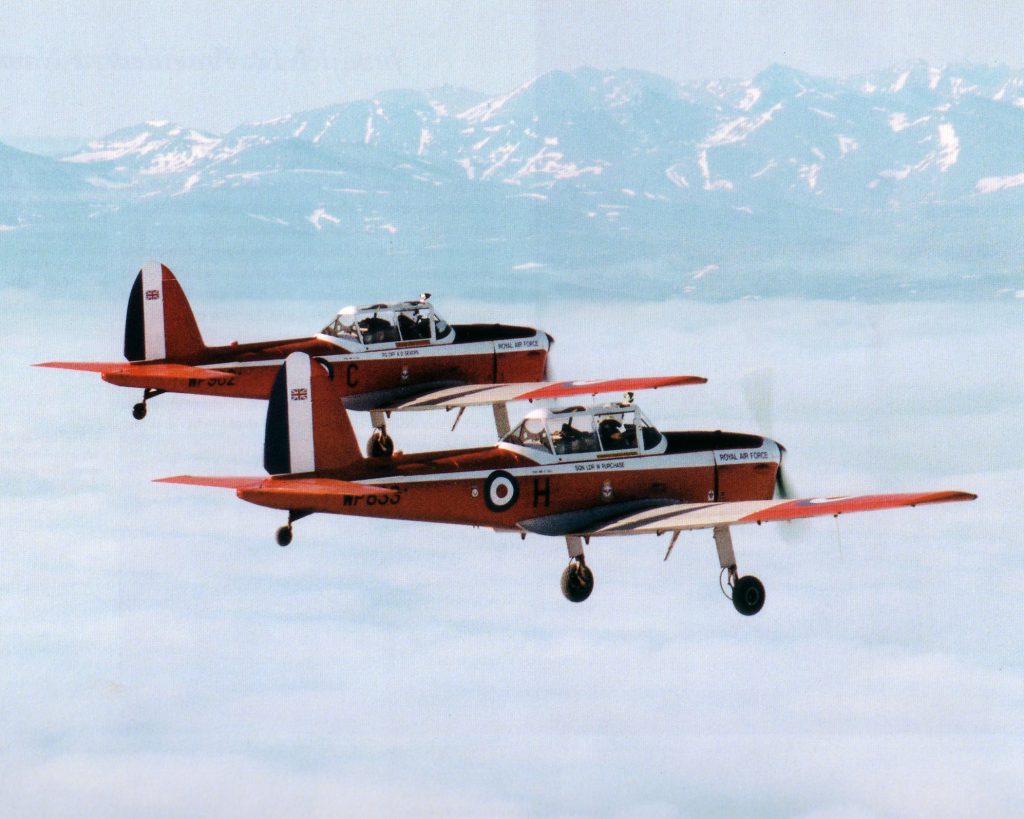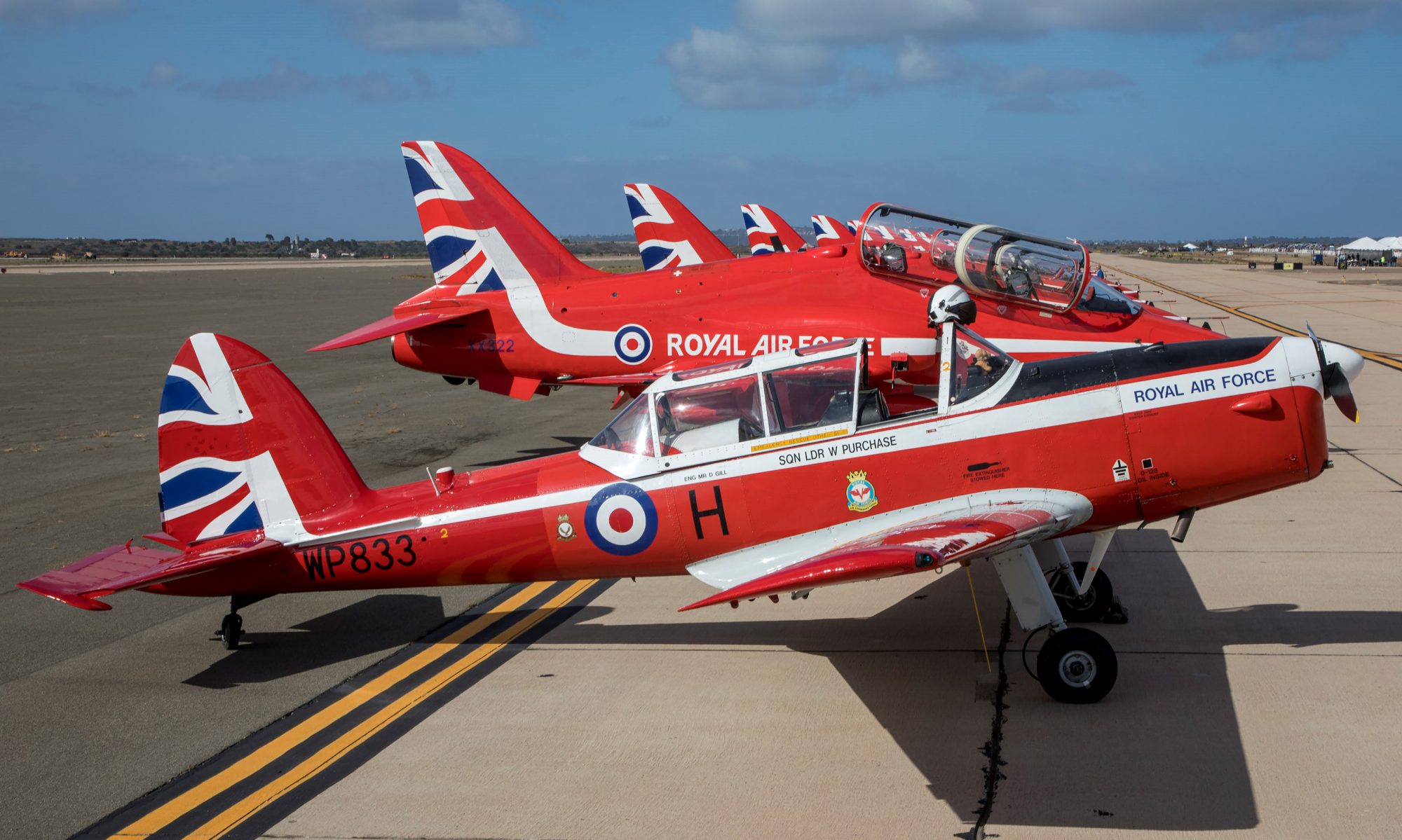Northern Venture Origins
As the Chipmunk entered its middle age with the Royal Air Force (which operated the largest fleet of Chipmunks of any armed force anywhere in the world), a group of pilots noted the forthcoming fiftieth anniversary of the type’s first flight and the idea of a Golden Jubilee celebration germinated. An expedition around the northern hemisphere was researched, visiting the home of De Havilland Canada, in Downsview, Toronto, birthplace of the Chipmunk. This received tentative approval and with that, Exercise ‘Northern Venture’ (known more colloquially as ‘Chipmunks Around The World’, or simply ‘ATW’) was born, with work beginning in early 1996 to make the idea a reality.
The 1996 Attempt
An attempted ‘Northern Venture’ departed Cambridge on 22 July, 1996. The team consisted of Sqn Ldr Tony Cowan as Chipmunk pilot and leader of the expedition, with Sqn Ldrs Ced Hughes and Bill Purchase, and Flt Lt Dave McKenna also as Chipmunk pilots, plus David Gill as Engineer. The plan was for an RAF Jetstream to accompany the Chipmunks as far as Moscow. A rented Antonov AN-2 would then take over support duties until leaving the Russian Federation, whereupon a rented US-registered commercial aircraft would take over for the route across Alaska, a Royal Canadian Air Force DHC-5 Buffalo across Canada, until another Jetstream covered the return from Canada back to the UK.
They were however fated not to proceed beyond Moscow, where bureaucracy stepped in. The team’s spares were confiscated by Russian immigration officials plus anticipated arrangements for leasing the AN-2 had to be renegotiated, with an increased fee and discontent between its proposed crew members. Ultimately, the team was told that the flight across the Russian Federation could not be authorized due to intense forest fires in the Siberian taiga, and although this was a legitimate concern there was also suspicion that it was a convenient smoke-screen (ah-hem) to obscure problems with the provision of Avgas for the Chipmunks. Somewhat dejectedly, the team returned to Cambridge.
However, not feeling completely dejected, the team pressed for a second attempt to be made the following year, and it took little to persuade the RAF hierarchy that a further attempt should be mounted, considering the understanding of Russia and its inherent problems which had been gained by the team during the aborted attempt.
The 1997 Attempt
One of the lessons of the 1996 was that a dedicated support ship was needed. This materializing in the form of a BN-2T Islander leased from the Police Air Support Unit (appropriately G-PASU), there being no suitable aircraft in the RAF inventory. Another lesson was that by leaving earlier in the year the risk of being delayed or even turned-around again by forest fires was much reduced.
The second attempt departed RAF Cranwell on May 20th 1997, landing at London City and RAF Manston before leaving UK airspace and, over the course of the next 6 days, heading out through Germany, Poland and Latvia, entering the Russian Federation, at Pskov, where they were introduced to their Russian ‘Navigator’, Yuri Vostroknutov. Arrival at Moscow on May 27th brought more administrivia, including having to fuel the Chipmunks with Mogas at Moscow’s international airport, Sheremet’evo, but eventually on the 30th they commenced their transit across the country.
Enduring and enjoying many incidents along the way the team finally arrived at Provideniya on June 13th, ready for their crossing of the Bering Strait, having said goodbye to Yuriy the previous day. The crossing to Nome, Alaska, yielded what has become the iconic photograph of the entire trip.

Arrival at Nome restored the creature comforts which the team had been denied during their traverse of the Russian Federation, including their first shower in 8 days.
After a day ‘recovering’ in Nome the team set off for Canada, entering the country on June 17th and proceeding eastwards to arrive at Downsview, home of the Chipmunk, on June 26th to a grand welcome from the Bombardier Company and many de Havilland enthusiasts with their own Chipmunks and various Moths. With a day’s relaxation, including a photo sortie over Niagara Falls, they continued across Canada, up into Newfoundland in readiness for a sea crossing to Greenland.
On July 8th they departed Qikiqtarjuaq to cross Baffin Bay for Kangerlussuaq, and after following the coastline to Greenland’s eastern shores they continued via Iceland and the Faeroes before making landfall back over British soil at Wick. After overnighting at RAF Kinloss they arrived on Friday July 18th at RAF Fairford, perfect timing for RIAT.
Exercise Northern Venture came to a final conclusion when, on July 21st, the Chipmunks returned to RAF Cranwell.
The 1997 core team consisted of:
Chipmunk Pilots Sqn Ldr James A. Cowan (RAF – Expedition Leader)
Sqn Ldr Ced G.W. Hughes (RAF VR)
Sqn Ldr William Purchase (RAF VR)
Engineer Mr. David Gill (Hunting Aviation)
Support Islander Pilot Fg Off Anthony D. Severs (RAF VR)
In addition the following personnel participated between the following points:
Air Training Corps Cadet WO Stephen Kirtley (RAF ATC) Cranwell – Warsaw
Photographer Cpl Steve Spencer (RAF) Cranwell – Moscow
Navigator Maj Yuriy Vostrocknutov (Russian Air Force) Pskov – Anadyr
Sponsor Mr. Philip Owen (International Business Strategies)
Eielson – Downsview
Photographer Flt Lt. John Dale (RAF VR) Downsview – Keflavik
The story of Northern Venture is told in full in the revised edition of Bill Purchase’s book ‘Around The World At 90 Knots‘.
